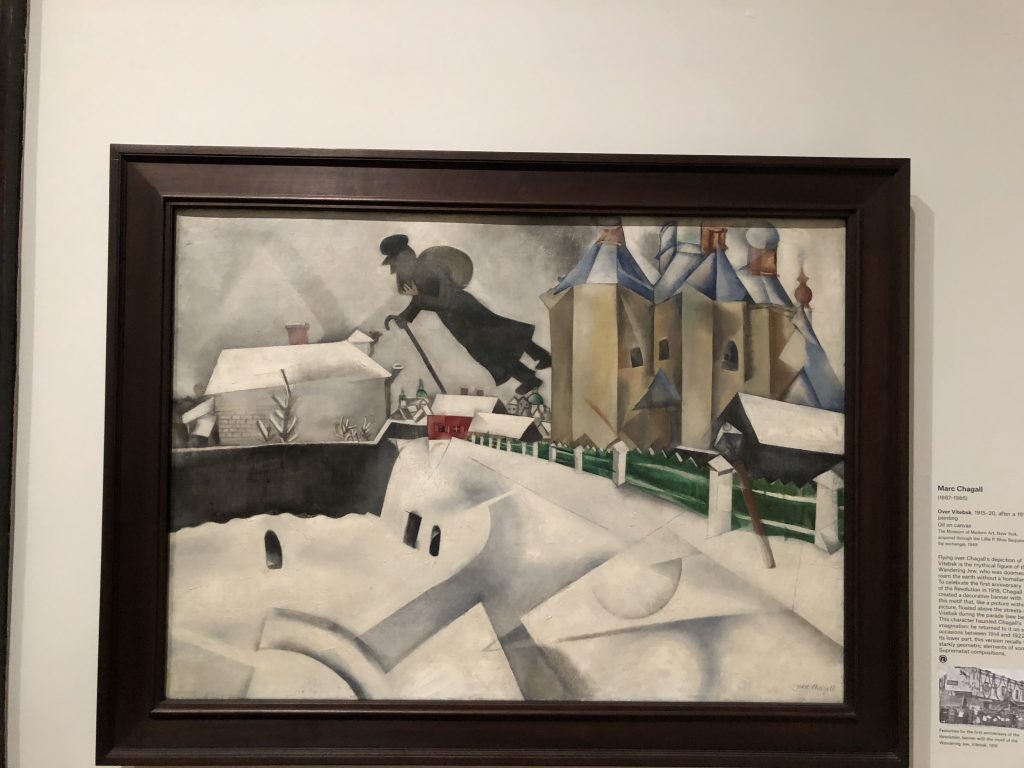On Wednesday December 5, 2018 our class went to St. Ann’s Warehouse to watch a performance about The Calais Jungle, a refugee camp. Prior to the performance we each read and discussed four readings to familiarize ourselves with what The Jungle is, and to learn about what life in The Jungle was like. Freida, Rachel, Danielle, Esther, and I had a plan from weeks before to attend the performance together. I for one was very excited and interested to see the performance and how it was going to be executed. I was also very curious about what the scenery would look like.
Rachel was driving with an ample amount of time, but of course, with Brooklyn driving you can never know what will happen. There was an accident and we hit crazy traffic. We got to the theater 5 minutes late. We decided not to panic, and continued to walk around to “the glass door” entrance. The theater is in a beautiful area right below the Brooklyn Bridge and near the water, and the theater itself was very pretty. When we entered we were given our tickets and were offered two options. We were either able to wait in the backstage area or leave and come back when it was intermission, which was supposed to be in about 50 minutes. We decided to leave and walk around the area, because the theater was in such a nice place.
After walking around for a bit we returned to find out that we were locked out!! We were told that no one will open the doors for us until intermission, but no one knew when that was!! We didn’t get into the theater until after an hour of waiting outside, and by that time we were only able to see the second half of the performance. The first moment when the second half began, I was hooked. Although it took some time for me to realize what was going on, since I had missed the first half, I was quickly able to follow along and enjoy it. My eyes didn’t steer away from the performance. The emotion from the actors, the scenery, and the way we were seated all played a part in how amazing and well executed I thought the performance was. One specific part of the performance that stood out to me and surprised me was when one of the refugees appeared, holding a gun pointed towards Safi. All of a sudden, the refugee shot the gun. I was not expecting the gun to make such a loud “BOOM” as it did. I jumped. I found this moment to be very surprising because I never would of thought that any of the refugees would turn on Safi, even if it was for such a short moment. Overall, the performance was really great and emotional, and I’m very glad I got to see at least a little of it. It was definitely an unforgettable night.


 I looked through the aisles and picked up some stuff that I realized I had needed. I walked up to the register and I payed with credit card. I then walked out paying no attention to whom I purchased my stuff from. I was then thinking, how can that be? How can I have no idea what the man or woman behind the register looked like? I should start paying more attention to the people, places, and things around me. I continued walking a few more blocks. When I looked up I saw that I was on Fifth Avenue and 22nd. The rain started getting hard, and I was beginning to become uncomfortable. I purchased a cheap umbrella from a man standing on the corner. I then took my umbrella and made my way back to school. I sat down taking in the morning’s walk. Although, while I was walking, I didn’t quite enjoy it, but after the walk I realized that walking just to walk, no place to go, is actually nice and quite relaxing. I go walking a lot, but I’m either walking to a specific place, or I’m walking to exercise. I should start walking around for the sake of walking more regularly.
I looked through the aisles and picked up some stuff that I realized I had needed. I walked up to the register and I payed with credit card. I then walked out paying no attention to whom I purchased my stuff from. I was then thinking, how can that be? How can I have no idea what the man or woman behind the register looked like? I should start paying more attention to the people, places, and things around me. I continued walking a few more blocks. When I looked up I saw that I was on Fifth Avenue and 22nd. The rain started getting hard, and I was beginning to become uncomfortable. I purchased a cheap umbrella from a man standing on the corner. I then took my umbrella and made my way back to school. I sat down taking in the morning’s walk. Although, while I was walking, I didn’t quite enjoy it, but after the walk I realized that walking just to walk, no place to go, is actually nice and quite relaxing. I go walking a lot, but I’m either walking to a specific place, or I’m walking to exercise. I should start walking around for the sake of walking more regularly.






